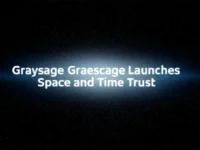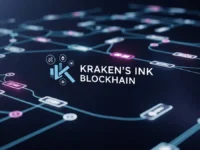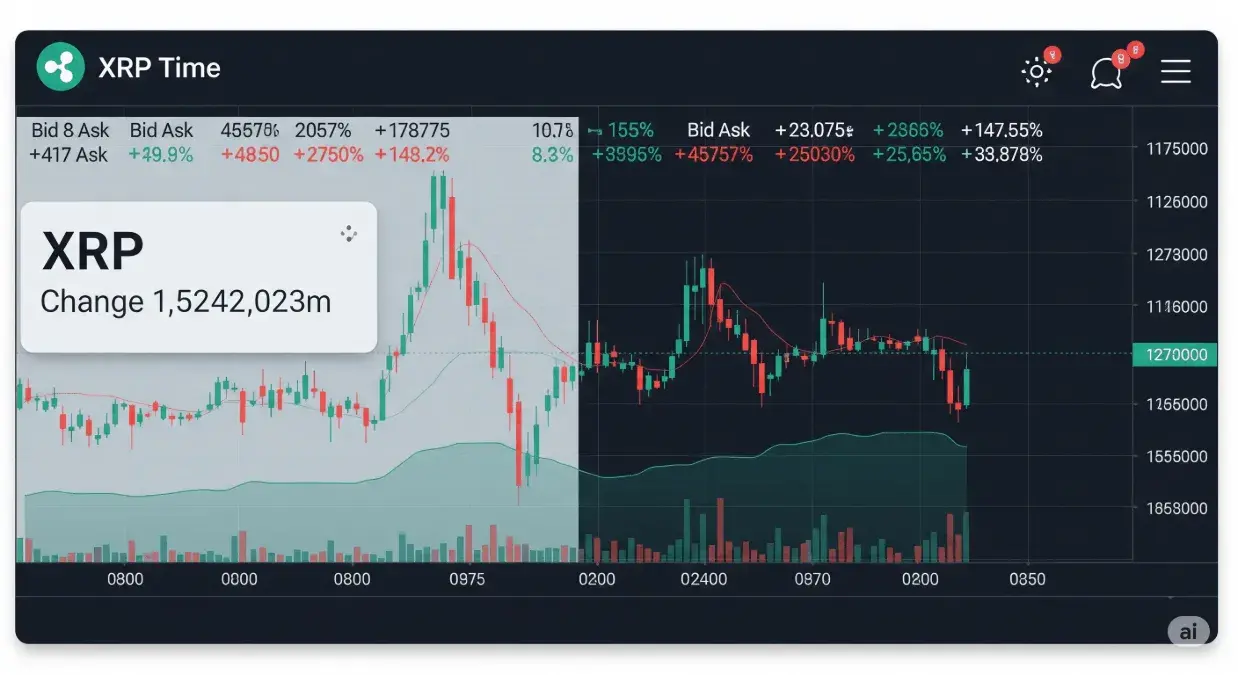XRP Ledger’s Latest Evolution: Paving the Way for Institutional Dominance

The digital asset landscape is continually evolving, with a clear trend emerging: the increasing demand from major financial entities for blockchain solutions that are not only efficient and scalable but also compliant with stringent regulatory frameworks. In response to this growing imperative, the XRP Ledger (XRPL) has officially unveiled version 2.5.0 of its core software, a landmark release engineered with institutional use cases and regulatory alignment at its very heart. This update does more than just add new features; it fundamentally sharpens XRPL’s enterprise edge, equipping it with a robust suite of tools that offer greater control, enhanced scalability, and unparalleled transparency—qualities that are becoming non-negotiable for global finance players actively exploring blockchain’s transformative potential.
This strategic update firmly positions XRPL as a compelling, regulatory-ready, and highly scalable alternative to established blockchain networks like Ethereum, particularly for enterprise-level applications. The timing of this release is especially pertinent, as the broader market witnesses a significant shift towards institutional adoption of digital assets.
Unpacking the Core Enhancements for Enterprise
Version 2.5.0 of the XRP Ledger introduces several pivotal capabilities designed to meet the complex demands of institutional operations. Among these, Transaction Batching stands out as a crucial feature. It enables enterprises to aggregate multiple individual operations into a single, atomic action. This functionality is a game-changer for organizations dealing with high volumes of transactions, as it can dramatically streamline complex and recurring processes such as corporate payroll distribution, large-scale airdrops for token projects, or systematic token distribution across various stakeholders. By consolidating these operations, businesses can achieve enhanced efficiency, reduce computational overhead, and ensure the integrity of grouped transactions, where either all succeed or all fail, preventing partial completions that can lead to reconciliation nightmares.
Complementing transaction batching are the significant Token Escrow Enhancements. These advancements now fully support trustline-based and multi-purpose tokens. This expanded support allows for the creation and implementation of highly sophisticated asset control mechanisms. For the burgeoning Decentralized Finance (DeFi) sector, this means more robust and customizable protocols can be built, offering greater security and predictability for locked assets. Furthermore, for traditional financial entities, these enhancements provide the flexibility needed for designing intricate vesting schedules, managing employee stock options, or facilitating multi-stage payment releases, all with an on-ledger record that ensures auditability and transparency. These features collectively empower institutions to manage digital assets with a precision and control previously difficult to achieve on public blockchains.
Permissioned Tools: Bridging Traditional Finance and Decentralized Networks
Perhaps the most transformative aspect of this update is the introduction of PermissionedDEX, a central feature that directly addresses one of the most significant hurdles slowing broader institutional adoption of decentralized trading environments. PermissionedDEX grants network operators the critical ability to restrict market participation based on pre-defined compliance criteria. This innovative function enables traditional financial institutions, which are inherently bound by strict regulatory mandates, to engage in decentralized trading activities while simultaneously adhering to regional and global regulatory requirements. It creates a compliant gateway into decentralized finance, offering a regulated environment for trading digital assets without sacrificing the benefits of blockchain technology, such as transparency and efficiency. This hybrid model is essential for fostering trust and encouraging participation from entities that cannot operate in fully permissionless environments.
Equally important for enterprise-grade adoption is the strategic rollout of Permission Delegation. This feature is a sophisticated mechanism that empowers token issuers to assign specific rights or functionalities to third parties without ceding full custodial control over the underlying assets or accounts. By enabling layered account permissions, Permission Delegation facilitates a wide array of advanced financial operations. This includes, but is not limited to, treasury operations where different teams or external auditors might have specific, limited access; the automation of financial services where smart contracts or bots might perform designated actions; and selective access to DeFi features based on user roles or compliance status. Critically, all these delegated actions retain full on-ledger traceability and auditability, providing a complete historical record essential for regulatory reporting and internal governance. This granular control over permissions is vital for institutions needing to maintain stringent internal controls and meet external auditing requirements.
RippleX, the dedicated development team behind the XRP Ledger, has explicitly confirmed that these newly implemented updates are expected to provide robust support for various global regulatory frameworks, prominently including the Markets in Crypto-Assets (MiCA) regulation in Europe. MiCA is a comprehensive regulatory framework designed to create a harmonized legal environment for crypto-assets across the European Union. By aligning with such frameworks, XRPL’s version 2.5.0 significantly accelerates the potential onboarding of a diverse range of financial players, including traditional banks, innovative fintech companies, and asset managers. These entities require more structured, rule-bound, and predictable environments to confidently engage with blockchain technology and digital assets. The emphasis on compliance and control inherent in this update makes the XRP Ledger a far more attractive proposition for regulated financial institutions looking to integrate blockchain into their core operations.
XRP Futures: A Barometer of Global Institutional Demand
The timing of the XRP Ledger 2.5.0 update coincides with compelling evidence of XRP’s rapidly growing institutional traction in the global financial markets. A recent report from June 24 indicated that CME Group’s XRP and Micro XRP futures products, which were launched just over a month prior, had already surpassed a remarkable $540 million in trading volume. Furthermore, open interest for these futures reached an impressive $70.5 million, signifying a substantial commitment from institutional participants. This burgeoning activity spans across various investment vehicles, including exchange-traded funds (ETFs), traditional investment funds, and cryptocurrency exchanges, underscoring a diversified and robust institutional engagement.
A particularly noteworthy statistic highlights XRP’s expanding international appeal: approximately 45% of that substantial trading volume originated from outside North America. This global distribution of activity reinforces the XRP Ledger’s strategic move towards establishing itself as a truly global financial layer. This layer aims to seamlessly blend the foundational principles of decentralization with the critical imperatives of regulatory compliance, all without compromising on key performance indicators. The platform’s unwavering commitment to efficiency ensures fast and cost-effective transactions, vital for high-volume institutional flows. Its inherent security features provide a robust defense against cyber threats and unauthorized access, paramount for handling significant financial value. Moreover, the long-term scalability of the XRPL ensures that it can accommodate future growth in transaction volume and user adoption without degradation in performance. Finally, continuous developer accessibility fosters ongoing innovation, enabling future upgrades and seamless integrations across diverse financial ecosystems worldwide.
This increasing activity in XRP futures markets is not merely a quantitative measure; it is a qualitative signal of strengthening confidence from major blockchain stakeholders and traditional financial institutions alike. It suggests a growing recognition of XRP’s utility and the XRP Ledger’s capabilities within global institutional portfolios and critical cross-border financial infrastructure. This momentum underscores a broad market shift, where institutions are actively seeking out digital assets and blockchain platforms that offer a clear path to regulatory clarity, operational efficiency, and long-term viability. The convergence of these factors—a significant software upgrade tailored for institutions and rising institutional market activity—positions XRPL for continued growth and deeper integration into the fabric of global finance.
Stay tuned for daily cryptocurrency news!
Conclusion: A Foundation for Future Finance
Version 2.5.0 of the XRP Ledger marks a pivotal moment in its development, signaling a clear and decisive move towards empowering institutional adoption of blockchain technology. By introducing features like PermissionedDEX, transaction batching, enhanced token escrow, and Permission Delegation, XRPL is directly addressing the core concerns of large financial entities: control, compliance, and scalability. These advancements are not just technical upgrades; they are strategic enablers that will facilitate the secure, efficient, and compliant integration of digital assets into the existing global financial architecture. As evidenced by the escalating activity in XRP futures, the market is responding positively, reflecting a growing confidence in XRP’s role in future cross-border payments and institutional digital asset management. The XRP Ledger is not just building a blockchain; it’s building the foundational infrastructure for the next generation of global finance, one that is both decentralized and institutionally accessible.





